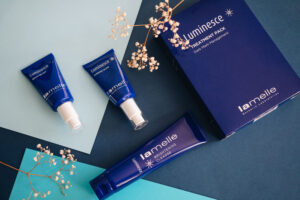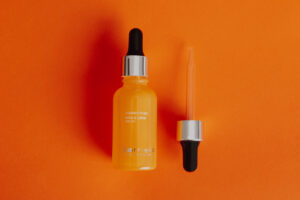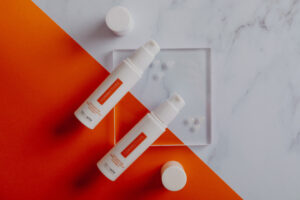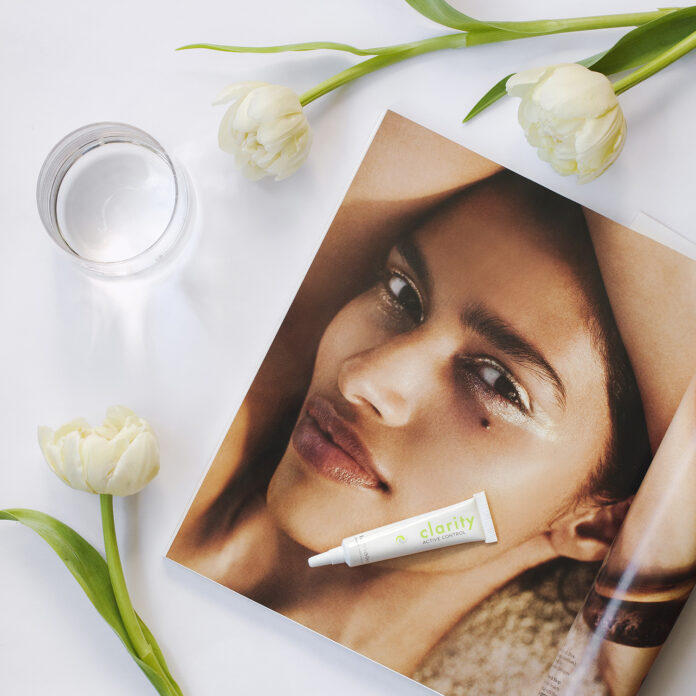Hyperpigmentation is one of the most common skin concerns in South Africa and it can affect men and women of all ages, and all skin tones. Sadly, it may sometimes be difficult to treat, and those who are prone to it will likely have to manage it continuously, as unwanted dark marks may return even once they have been minimised.
Hyperpigmentation is sometimes referred to as dark marks or uneven skin tone. It happens when the skin’s melanin (pigment) production is increased, and this excess melanin takes the shape of dark marks on the skin. There are various reasons why the skin may produce excess melanin, one of which is sun exposure. When our skin is exposed to the sun, it produces more melanin to protect itself (which becomes a sun tan), but sometimes the skin doesn’t produce melanin evenly, which results in dark patches. Sun-induced hyperpigmentation is especially common in fair skin tones.
Sun exposure can result in dark marks, but it can also worsen hyperpigmentation caused by hormones or injury (including acne scars). So even if the sun did not cause your hyperpigmentation, it may still worsen it.
Luckily, the advancement of modern technology, professional skincare treatments and skincare products means that hyperpigmentation is becoming more manageable. While there are various causes and triggers of hyperpigmentation, there are a few things that everyone can do to help prevent the formation, and treat existing areas of concern:
The do’s
Determine the root cause
The most common cause of hyperpigmentation is sun exposure, but it is not the only one. Hormonal changes, certain medications or acne may all be to blame. To find the best solution for your hyperpigmentation, it is important to determine what is causing it. Pay a visit to your dermatologist or skincare therapist to find out what is triggering it, and how it can be treated.
Avoid excessive sun exposure
To prevent hyperpigmentation from worsening, it is important to stay out of the sun during peak hours (from around 10am to 2pm). This is when the sun’s UV rays are at their strongest and capable of doing the most damage. If you are going outside, be sure to cover up with protective clothing, a wide brimmed hat and sunglasses and apply sunscreen to all exposed areas.
Invest in good quality products that are proven to help minimise hyperpigmentation

If you have unwanted dark marks, you need to use skincare products that were specifically formulated for hyperpigmented skin. For real results, invest in a good quality range that has clinical studies to back up their claims. Lamelle’s Luminesce range intervenes with pigment formation in melasma at the skin’s DNA level and inhibits the pathways of pigment formation. The range contains a cleanser, moisturisers, eye cream and sun protection, so you can enjoy an entire regime of products aimed at managing and preventing hyperpigmentation.
Add vitamin C to your skincare regime

Vitamin C is widely used for its brightening benefits. It protects the cells in the skin from being injured by free radicals formed with sun exposure. It is a potent antioxidant that protects the skin from the formation on hyperpigmentation while minimising existing hyperpigmentation and increasing the skin’s radiance. Incorporate a vitamin C serum like Lamelle Correctives Vita C Lipid Serum in your daily regime. This lipid-soluble vitamin C serum offers advanced vitamin C action without irritating the skin.
The don’ts
Don’t leave home without applying SPF first
Sun protection is our number one fighter in the combat against hyperpigmentation. No matter what time of the day it is, or how sunny it is outside, you absolutely have to apply SPF before heading outdoors. This is a non-negotiable if you’re serious about minimising existing pigmentation, or preventing the formation of new dark marks. Lamelle Helase 50 offers unique broad-spectrum protection by protecting you against effects of the full spectrum of solar radiation, including visible and infrared light. This while also mopping up damage that might be caused by the sun.
Don’t try home remedies
If you follow beauty content on Instagram or Tik Tok you may be familiar with some of the home remedies people use in an attempt to treat hyperpigmentation. From lemon juice to bicarbonate of soda, social media is filled with DIY skincare recipes. We recommend steering clear of these trends, as they are not proven successful, and many of them are actually harmful to the skin.
Don’t scrub excessively

A common myth is that exfoliating your skin regularly with a scrub will help remove stubborn pigmentation. This is entirely untrue. While exfoliation forms an important part of a healthy skincare regime, mechanical scrubs have a tendency to create micro-tears in the skin, plus, if you over-exfoliate, you may actually damage your skin barrier, cause sensitivity and end up worsening the hyperpigmentation. Opt for an enzymatic exfoliator such as Lamelle Correctives Cathepzyme once or twice a week instead
Don’t pick your skin
Ever heard of post-inflammatory hyperpigmentation (PIH)? Those are the dark marks that remain behind after a pimple has healed. When you pick at blemishes, you not only put your skin at risk of infection, but you also increase your chances of developing PIH. As difficult as it may be, avoid picking at blemishes or touching them unnecessarily. Apply a treatment gel such as Lamelle Clarity Active Control twice a day and allow the blemish to heal.
While hyperpigmentation is known for being tricky to manage, it is not impossible, and with the right products and lifestyle choices, you too can enjoy an even skin tone and radiant complexion.
For more information, visit www.lamelle.co.za.

